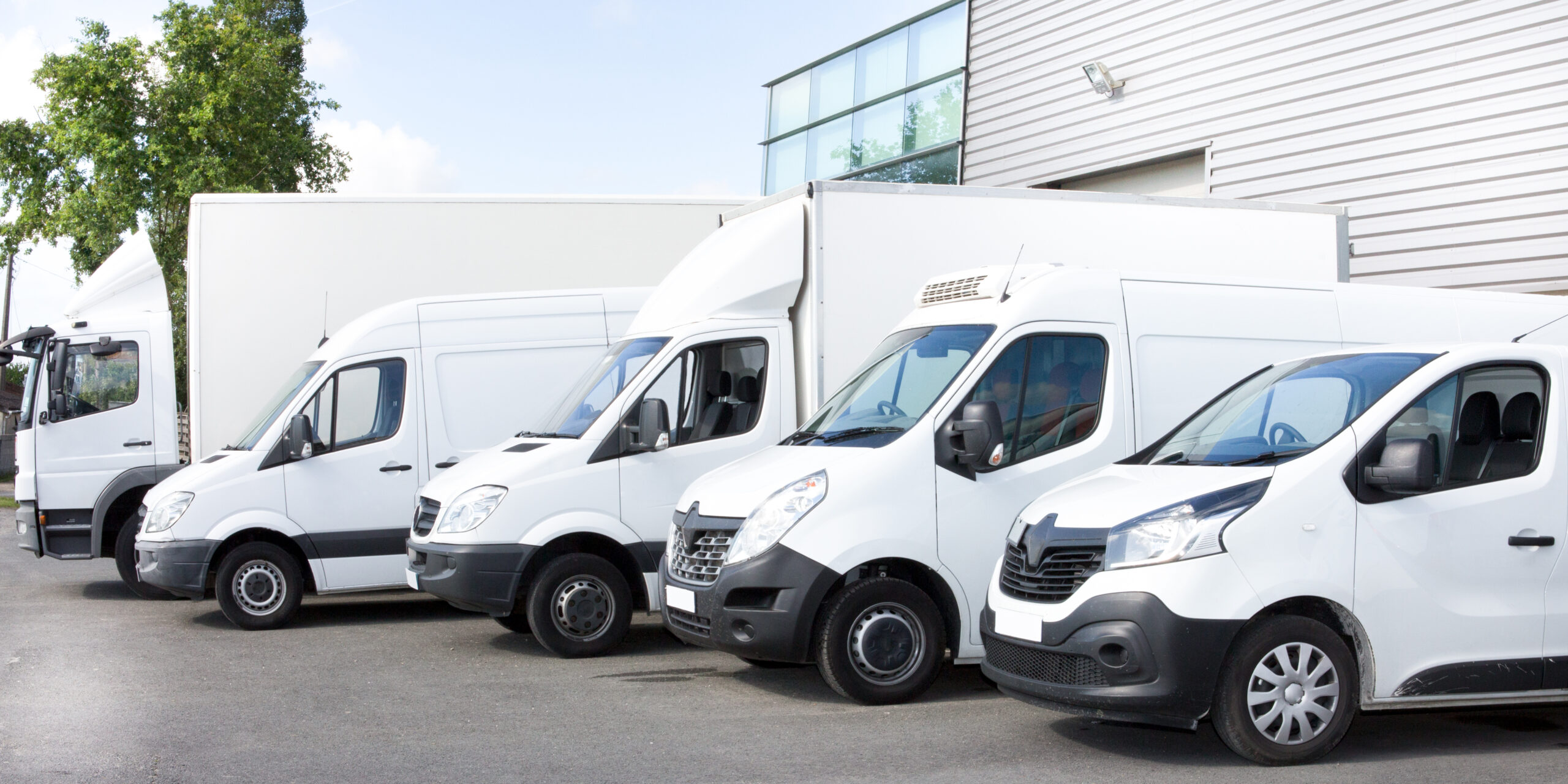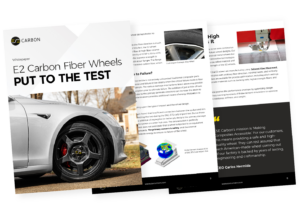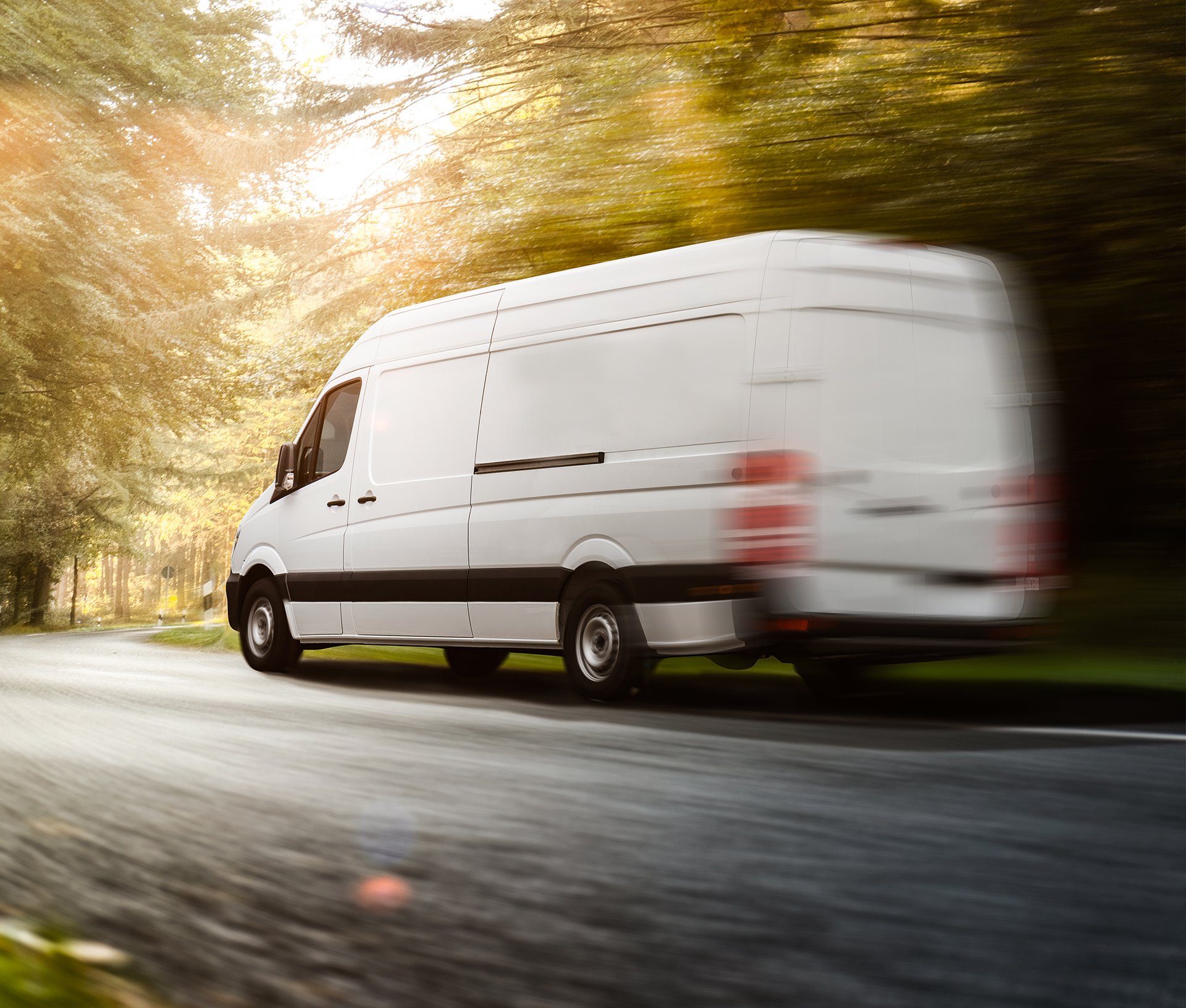The transporting of goods from a distribution hub to the final delivery destination is referred to as last mile delivery. With this final leg of delivery comes challenges—include minimizing cost, increasing efficiency, and improving infrastructure. According to Business Insider, the last leg of the supply chain is often the least efficient, comprising up to 53% of the total cost to move goods.
This is where electric vehicles (EVs) are increasingly becoming a feasible solution. Many companies are switching from gas-guzzling delivery vehicles to small and medium commercial electric cargo vans to reduce costs and increase efficiency. As the focus on this last leg of the delivery chain increases, so will weight reduction for EVs to improve battery life and mileage.
On average, the last mile radius is 150 miles, which can be driven on a single charge for EV delivery vehicles. Extending that range through increased efficiency is where carbon fiber parts and wheels come into play. By reducing the weight and rolling inertia, companies can increase the battery life and mileage.
Electric vs. Gas-Powered
A study on urban delivery trucks by Georgia Tech University found they use about 30 percent less total energy and emit about 40 percent less greenhouse gas emissions than diesel trucks. “In urban delivery routes with lots of stop-and-start driving, electric trucks are roughly 50 percent more efficient to operate than diesel trucks overall. That makes them at least 20 percent less expensive than diesel-fueled trucks and reduces greenhouse gas emissions by roughly 50 percent.”

The Total Operational Costs (TOC) of Last Mile Delivery
EVs require significantly less maintenance than gas or diesel vehicles, fewer major repairs, and less downtime. For example, EVs don’t require regular oil and filter changes, exhaust after-treatment maintenance or diesel emission fluid (DEF) replacement. EVs also do not have components like spark plugs, carburetors, water pumps, belts, fuel injectors and transmissions parts that need to be serviced and replaced. In a study done by the Pacific Gas and Electric Company, changing a fleet of 20 Class 3 delivery trucks from diesel to EV, the TCO over 10 years for diesel is $3.87M vs. $2.04M for EVs.
Why are light commercial electric delivery trucks the solution for the Last Mile Delivery?
- Less cost of operation and ownership against gas or diesel
- 100% environmentally friendly
- Can use carbon footprint credits
- Great image for the corporation
- Significantly less air and noise pollution in the inner cities
There is also the EV100, a global initiative organized by The Climate Group, bringing together forward-looking companies committed to accelerating the transition to EVs, to make electric transportation “the new normal” by 2030. Here are just a few of its members and their commitment:
- ABB Transition fleet of 11,000 vehicles to EV by 2030
- AGL Energy Transition fleet of over 400 vehicles to EV by 2030
- An Post Transition fleet of 3,600 vehicles to zero-emission by 2030
- AstraZeneca Transition fleet of 16,000 vehicles to EV by 2025
- Austrian Post Transition fleet of 8,500 vehicles to EV by 2030
- Aviva Transition fleet of over 1,000 vehicles to EV by 2025
- Biogen Transition fleet of over 1,600 vehicles to EV by 2030
- BT Group Transition fleet of approximately 30,000 vehicles by 2030
- Centrica Transition fleet of over 10,000 vehicles to EV by 2030
- Deloitte Transition fleet of 15,000 vehicles to EV by 2030
- EDF Group Transition fleet of 40,000 vehicles to EV by 2030
- Fleet Alliance Transition its customer fleet of 37,000 vehicles to EV by 2030
Clean Air Zones
Air quality is another factor driving companies away from gas and diesel-powered trucks. More than 200 cities in 10 countries across Europe are now operating Low Emission Zones (LEZs), which restrict polluting vehicles entering a city. Since commercial vehicle traffic is a significant factor contributing to air pollution by particulate matter in urban areas, many cities have designated LEZs is to improve the air quality within these zones and thus protect public health.
In the U.K., many cities have instituted Ultra Low Emissions Zones (ULEZs).
Other cities in Europe have Clean Air Zones (CAZs), designated areas that restrict vehicle usage for air pollution reduction purposes. Fees are often charged for cars, trucks, buses, and higher CO2 vehicles that don’t meet the required standards.
This pressure will likely make its way to the U.S. as well, which is why most major companies are investing in thousands of lightweight electric trucks for the last mile delivery.

What companies have committed to EV delivery trucks?
- Amazon is planning to have 10,000 Rivian electric vehicles (EVs) on the road in 2022 and 100,000 by 2030
- IKEA Plans to carry out 25 percent of its last-mile deliveries by electric vehicles by 2025
- BigBasket plans to increase its fleet of 800 EVs to 4,000-5,000 in the next two years
- Walmart has entered an agreement to reserve 5,000 electric-powered vans from BrightDrop
Carbon Fiber’s Role in Lightweighting & the Last Mile
Composite materials can play a crucial role in reducing the weight of electric vehicles. While carbon fiber is five times stronger than steel and twice as stiff, it is also lighter since it does not require as much wall thickness as steel parts. Any weight reduction without affecting the mechanical structure is a boon for EV performance.
For example, carbon fiber wheels exponentially reduce the energy needed to operate – rolling weight, unsprung mass, acceleration, and deceleration are all improved by lowering the inertia of the truck.
ESE Carbon developed one of the first one-piece carbon fiber aftermarket wheels. Our E2 wheel, for instance, is 40% lighter than most aluminum rims. This substantial weight savings, combined with weight savings of other carbon fiber automotive parts, can vastly increase commercial electric vehicles’ battery life and mileage.

Carbon Fiber Put to the Test
Curious how carbon fiber holds up under impact? And in extreme cold environments? Our carbon fiber wheels have been put to the test and meet or exceed the standards set in North America by the Society of Automotive Engineers (SAE) ‘s Recommended Practices, as well as Germany’s TÜV (Technischer Überwachungsverei). Download the Impact Resistance whitepaper for a detailed report of the curb and pothole impact testing results.
If your company is interested in exploring the increased efficiency or lightweighting of vehicles through carbon fiber—whether it is for last mile delivery or any other purpose—reach out to our carbon fiber experts to learn more at https://ese-industries.com/contact/.
